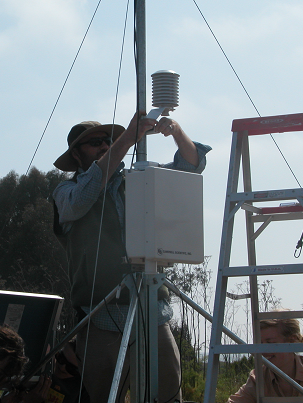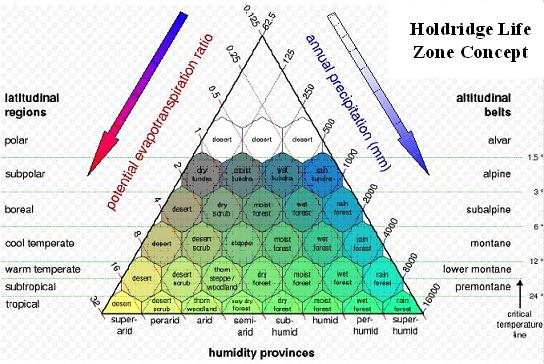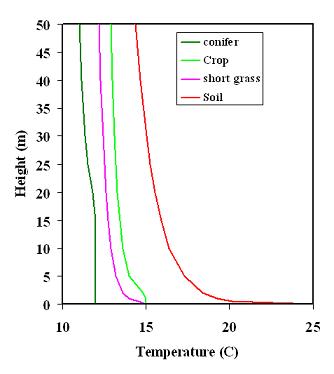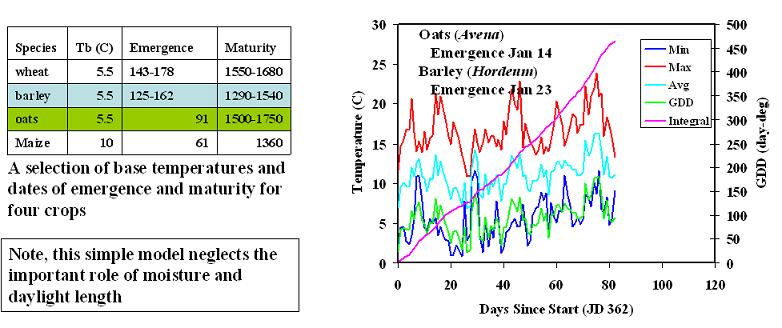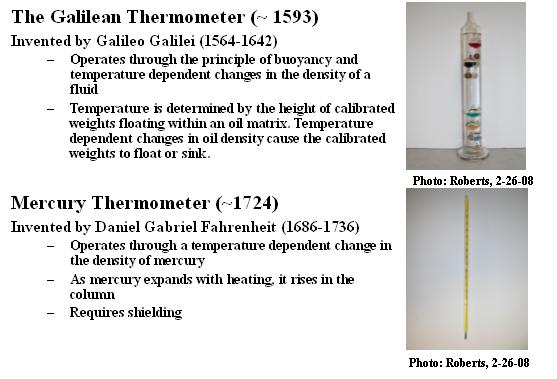|
Important Physical Constants:
- Specific Heat
- Volumetric Heat Capacity
Both are temperature and pressure dependent. |
Specific Heat (Cs):
The amount of energy required to raise 1 kg of an object one K.
Water: Cs = 4.1868x10^3 J kg-1 K-1
Dry air: Cs = 1.0x10^3 J kg-1 K-1
Specific Heat is important because:
- Dry materials have a lower specific heat, and thus change temperature
more readily
- Moist or wet materials have a higher specific heat and thus change
temperature less readily
- This is a major factor governing temperature variation between
coastal and continental regions
- This is a major factor modifying temperature variation in the
atmosphere, with higher humidity resulting in less variable air
temperatures
|
Volumetric
Heat Capacity (Cv):
Defined as the amount of heat required
to raise a unit volume of a substance 1 K.
Cv=ρ Cs
Cv = Volumetric Heat Capacity (J m-3 K-1)
ρ = density (kg/m3)
Cs = Specific Heat
Typical values
Water: Cv = 4.1868x10^3 J kg-1 K-1*1000 kg/m3=4.1868x10^6 J m-3 K-1
Dry air: Cv = 1.0x10^3 J kg-1 K-1*1.25 kg/m3=1.25x10^3 J m-3 K-1 |
